On the Road is a weekday feature spotlighting reader photo submissions.
From the exotic to the familiar, whether you’re traveling or in your own backyard, we would love to see the world through your eyes.
UncleEbeneezer
After the Reunification Palace we continued on to the War Remnants Museum. Per Wikipedia:
Operated by the Ho Chi Minh City government, an earlier version of this museum opened on September 4, 1975, as the Exhibition House for US and Puppet Crimes[1] (Vietnamese: Nhà trưng bày tội ác Mỹ-ngụy). It was located in the former United States Information Agency building. The exhibition was not the first of its kind for the North Vietnamese side, but rather followed a tradition of such exhibitions exposing war crimes, first those of the French and then those of the Americans, who had operated in the country as early as 1954.[2] In 1990, the name was changed to Exhibition House for Crimes of War and Aggression (Nhà trưng bày tội ác chiến tranh xâm lược), dropping both “U.S.” and “Puppet.”[2] In 1995, following the normalization of diplomatic relations with the United States and end of the US embargo a year before, the references to “war crimes” and “aggression” were dropped from the museum’s title as well; it became the War Remnants Museum.[2]
It was fascinating to see a memorial to the “American War” from a perspective so different than the one so commonly pushed in the US. They don’t shy away from the fact that America was the invader/interloper.
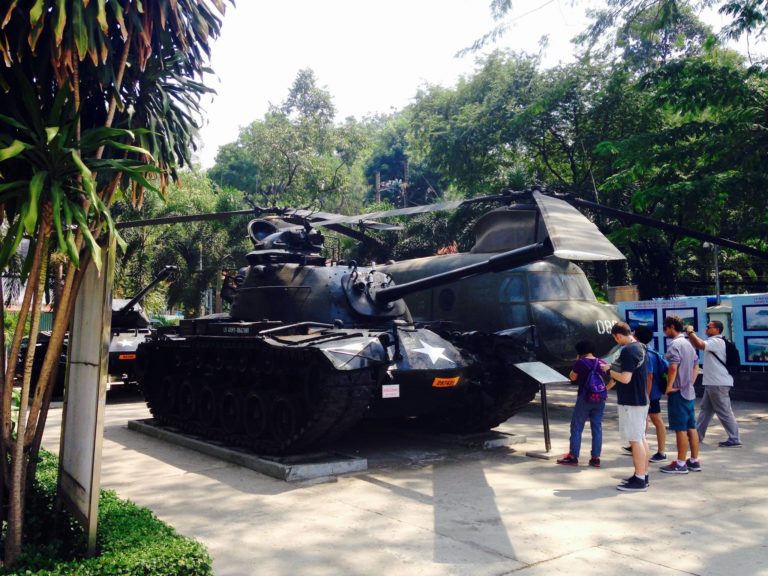
The outdoor courtyard is filled with numerous US and Vietnamese weapons and vehicles. Here is an old tank and helicopter behind it.
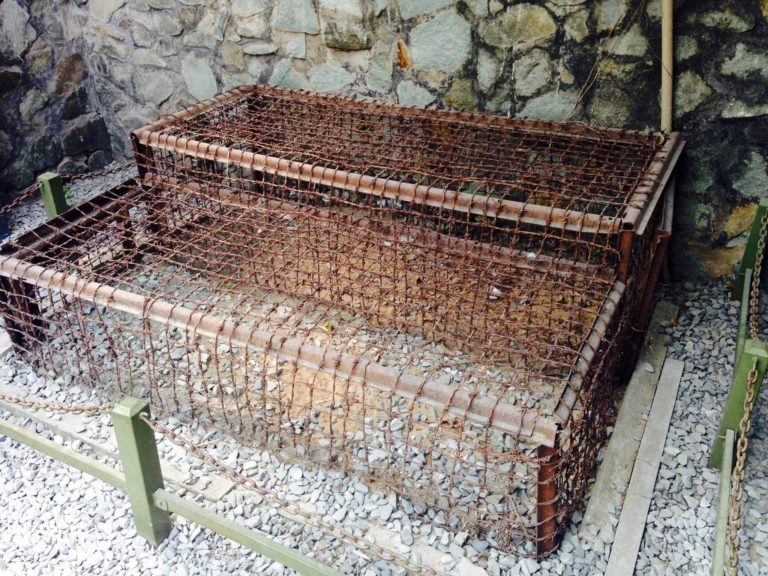
Many of the most horrific items at the museum are from the years of war with France.
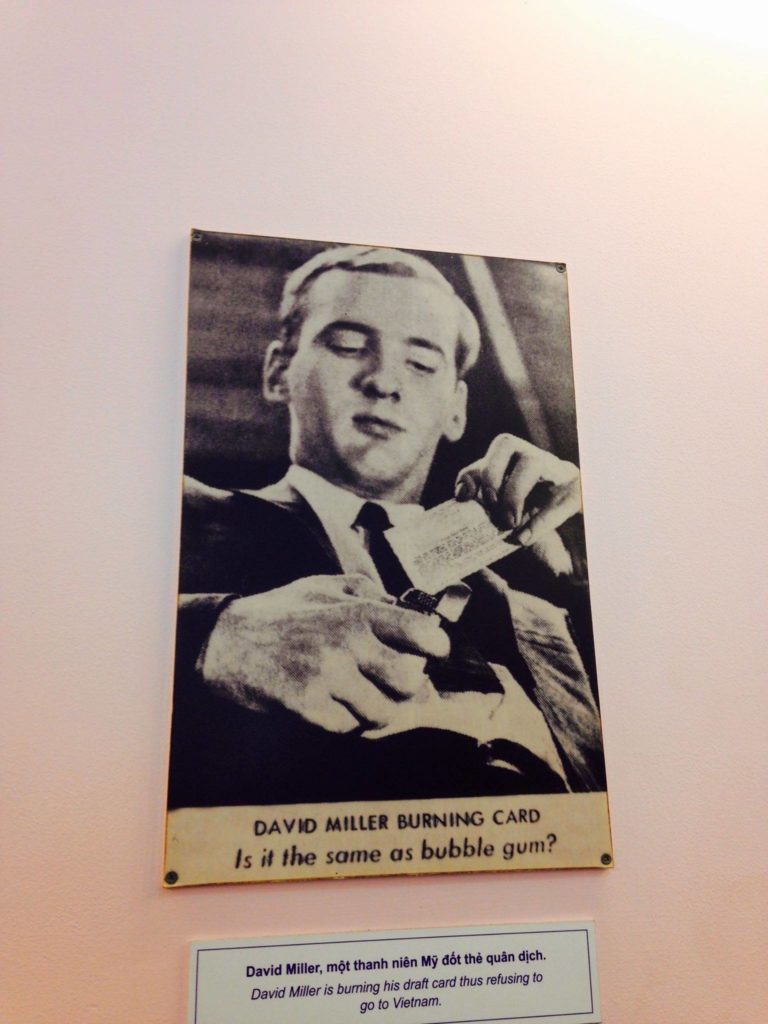
There is a significant section of the museum dedicated to the Anti-War movement in the US and elsewhere. It’s very clear that this was a very unpopular war, throughout the world.
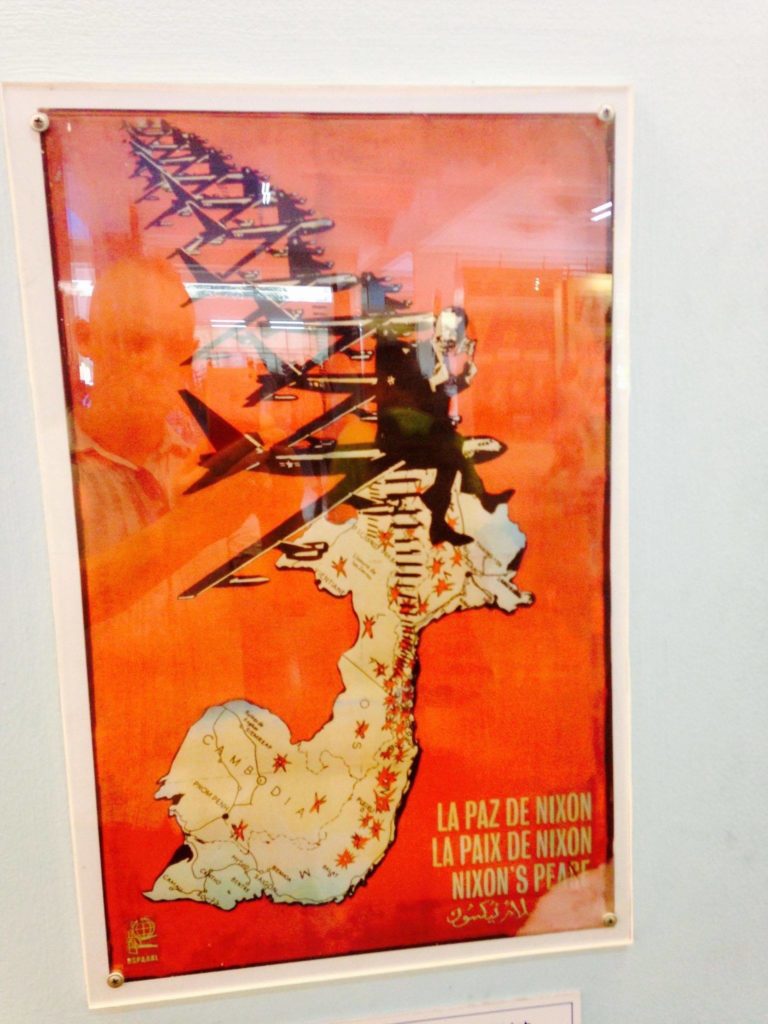
Propaganda poster highlighting Nixon’s indiscriminate bombing.
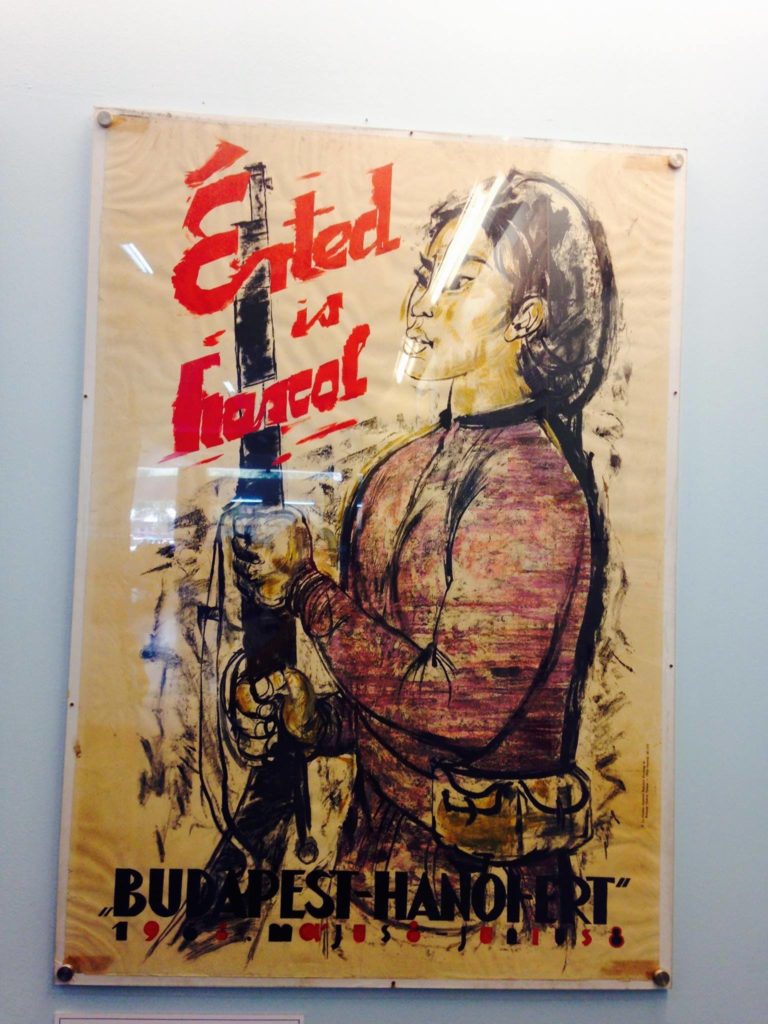
Neat VietCong/resistance propganda poster.
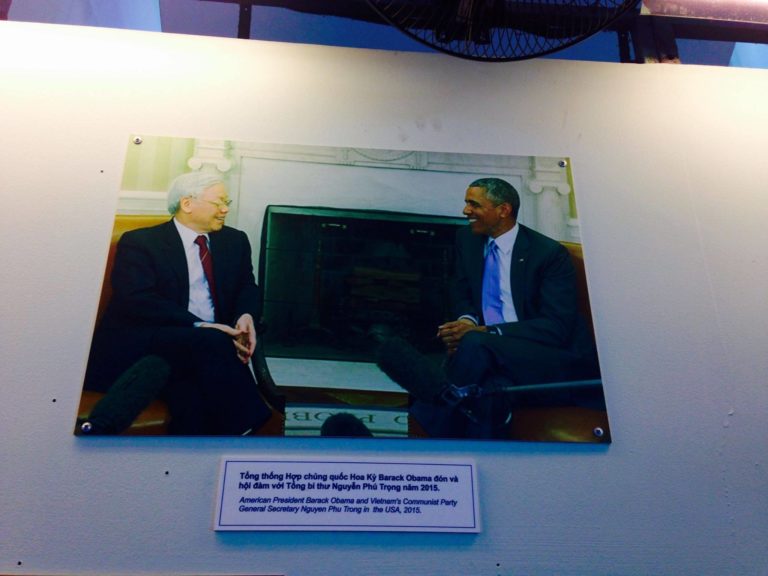
After so much misery and death (the museum is a HEAVY experience) this picture, naturally made me smile.
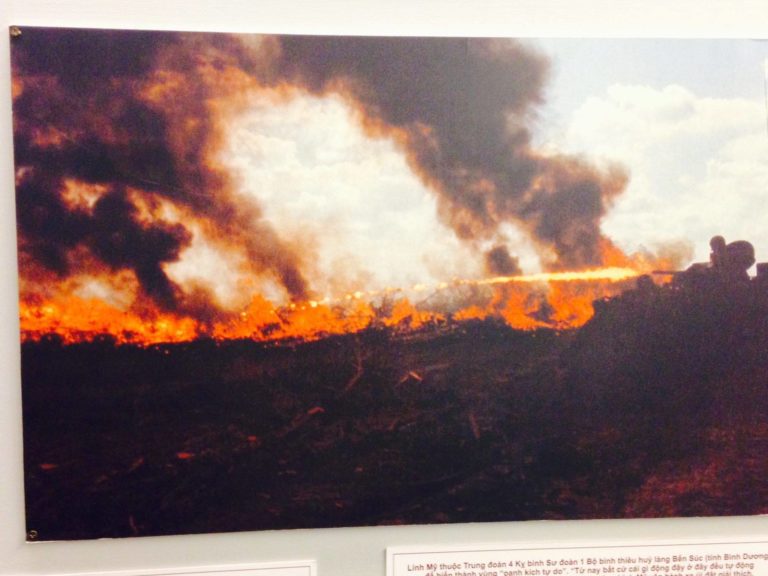
The second floor of the museum highlights some of the worst atrocities perpetrated by the US. Here is a picture of napalm, in action.
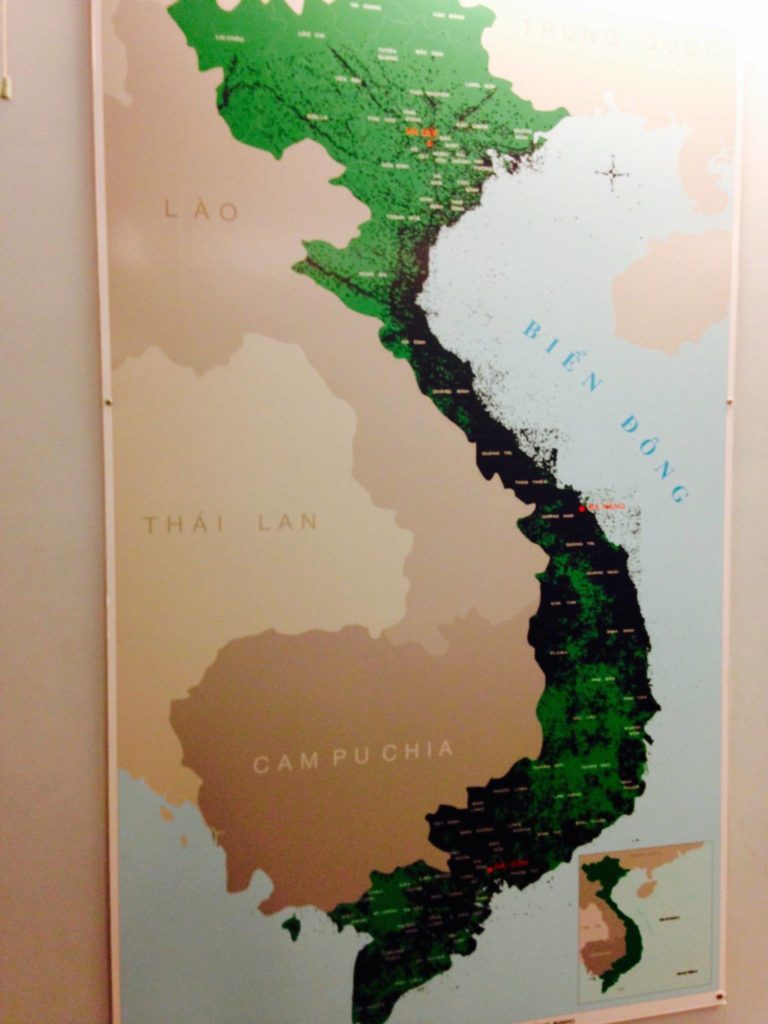
The amount and scale of destruction really crystalizes when you see just how much we bombed this beautiful country.
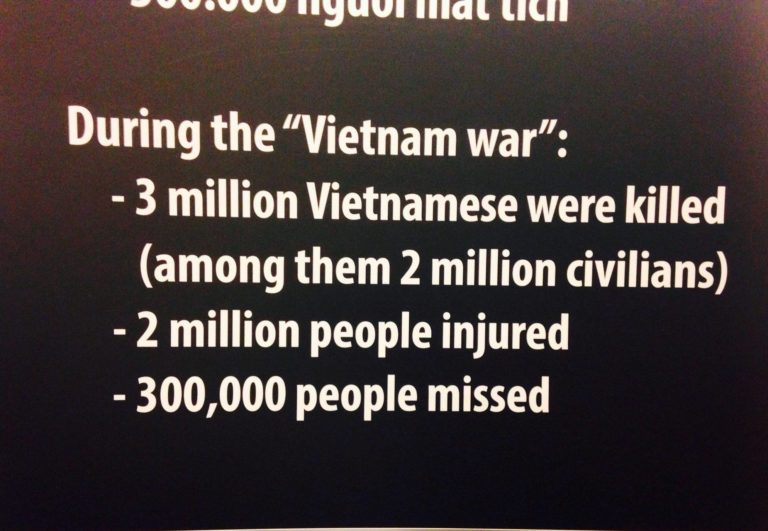
The loss of US lives, while tragic, was tiny by comparison to that of the Vietnamese people.
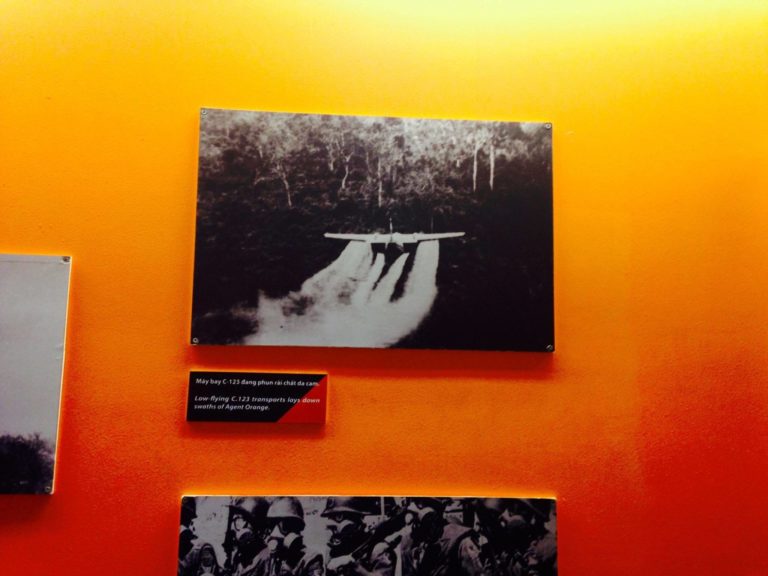
A picture of a US plane dropping Agent Orange on the jungle. There was a whole section of pictures documenting the gruesome results of stuff like this, but I’ll spare you all from seeing them. There were also some really disturbing pictures from My Lai.
All in all, this is a fantastic museum, that everyone should try to visit if you are ever in HCMC/Saigon. It requires several hours to do it right, and obviously you gotta be in the right frame of mind since it is filled with much tragedy and death.
The worst part is that as we were leaving I saw a large table selling various books about the war, and on that same table were a couple stacks of “Art of the Deal.” This was early 2016, and all I wanted, even then, was to be rid of that fucker…

Cermet
I find the fact they dropped those rather true descriptive adjectives to not insult US (or butt hurt amerikan feelings); they have certainly put a lot of that tragic war behind them – unlike so many others.
eclare
Interesting photos and writing!
OzarkHillbilly
Of course, Obama on one of his numerous “Apology” tours.
just in case, s//
citizen dave
Thanks for sharing. Will definitely remember this and do it if I ever travel there. The amount of destruction is truly mind boggling. Was recently watching the Burns/Novak(?) doc but have left it around 1970. Heavy indeed.
Laura Too
I was in college before I heard the number of people who died on the Vietnamese side, it took my breath away. I realized just how poor my education was and how much propaganda I had been fed. Thanks for sharing your experience.
UncleEbeneezer
@citizen dave: The amount of destruction was really brought home later when we were in Angkor Wat and our bicycle tour guide warned us to stay on the path because there are still lots of landmines and unexploded ordinances all over the jungle areas.
JanieM
Thanks for the post, Uncle Ebenezer.
Landmines: I was once involved, in another context, with some of the people who founded PeaceTrees Vietnam, which works on landmine removal.
UncleEbeneezer
@JanieM: Wonderful. If I remember correctly wasn’t that the cause that Lady Diana took up in her later years?
opiejeanne
My youngest and her husband visited Vietnam for their honeymoon in 2017. She brought back similar terrible photos and stories from HCMC/Saigon, and yet the Vietnamese people were very friendly.
It’s a beautiful country.
UncleEbeneezer
@opiejeanne: I didn’t even share the terrible ones!! Seriously, the museum doesn’t pull any punches. That said, it felt pretty fair in it’s approach to the truth of that war. Really none of the kind of Triumphalism sentiment that you would see in American museum treatments of our own war experiences (Revolution, WWI, WWII)
And yes, the people were super nice and friendly almost everywhere.